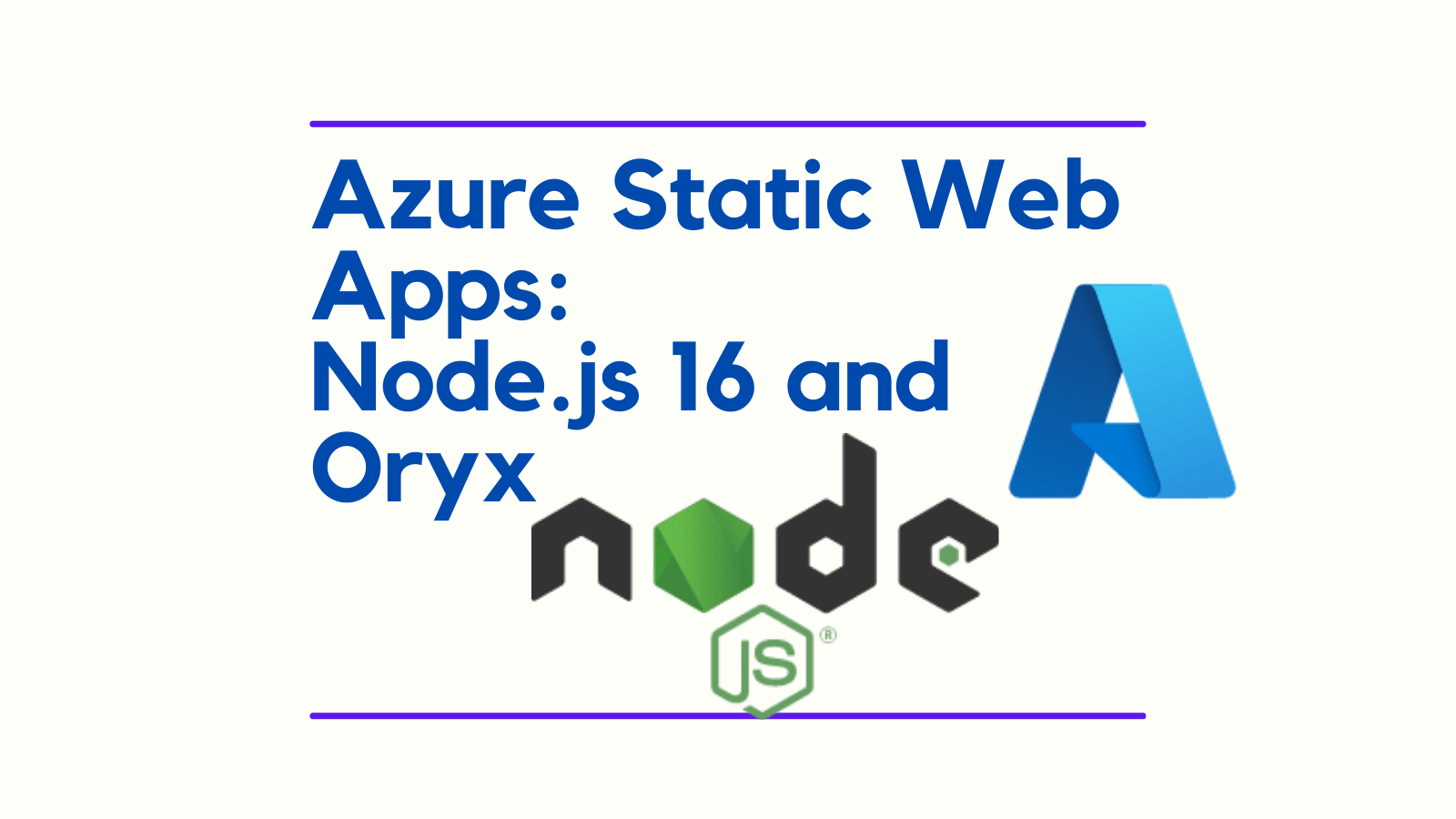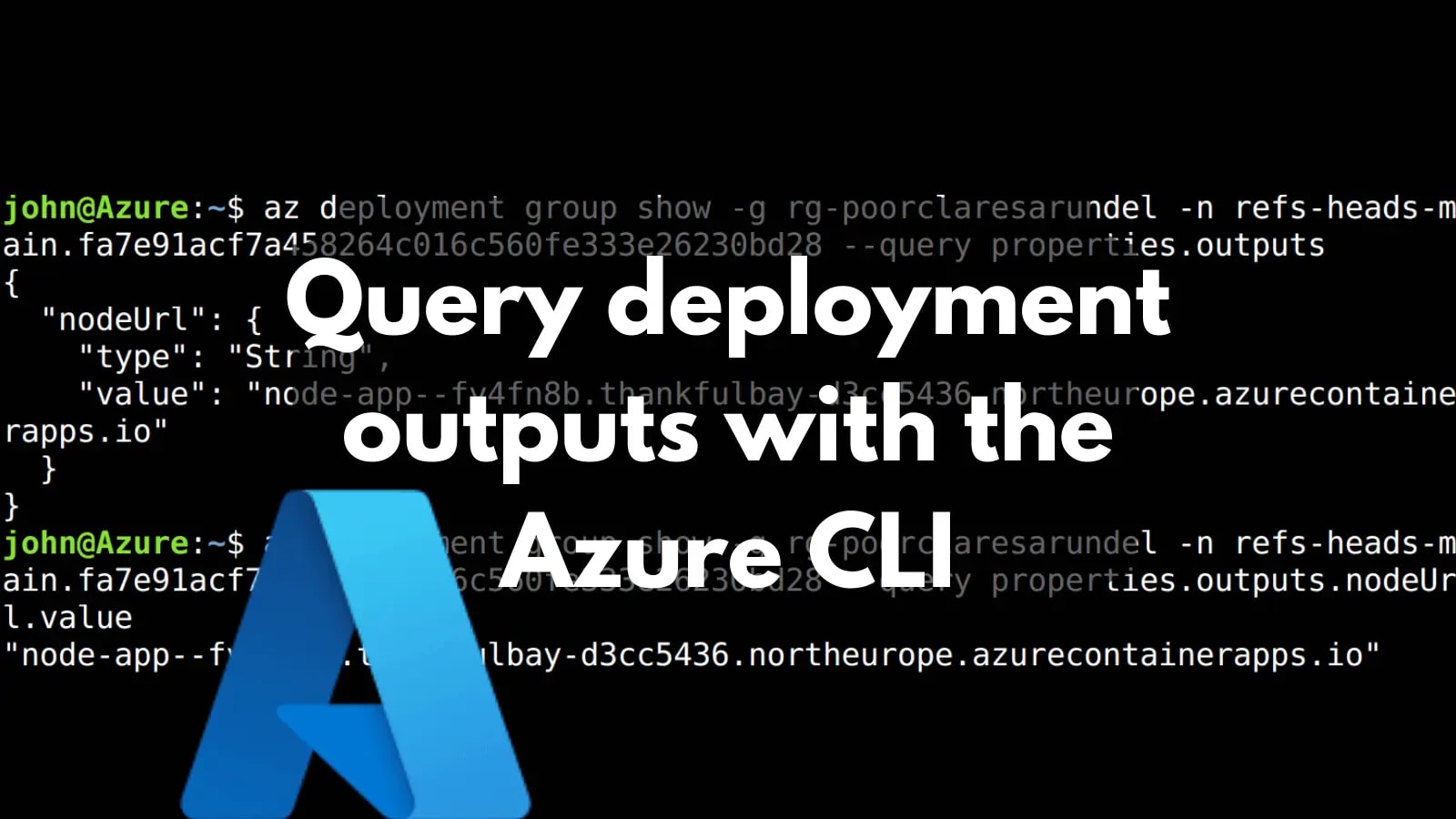Azure Static Web Apps: Node.js 16 / 18 and Oryx
Azure Static Web Apps presently fixes to Node.js 14 when building. If you require a different version of Node to build, this can be a problem. This post outlines a workaround.

The Microsoft cloud platform.
View All TagsAzure Static Web Apps presently fixes to Node.js 14 when building. If you require a different version of Node to build, this can be a problem. This post outlines a workaround.

It's often desirable to query the outputs of deployments to Azure. This post demonstrates how to do this using the Azure CLI, bash and jq. It also shows how to generically convert deployment outputs to GitHub Action job outputs.

Azure standard tests are a tremendous way to monitor the uptime of your services in Azure. Sometimes also called availability tests, web tests and ping tests, this post goes through how to deploy one using Bicep. It also looks at some of the gotchas that you may encounter as you're setting it up.

How can we deploy resources to Azure, and then run an integration test through them in the context of an Azure Pipeline? This post will show how to do this by permissioning our Azure Pipeline to access these resources using Azure RBAC role assignments. It will also demonstrate a dotnet test that runs in the context of the pipeline and makes use of those role assignments.

If we're provisioning resources in Azure with Bicep, we may have a need to acquire the connection strings and keys of our newly deployed infrastructure. For example, the connection strings of an event hub or the access keys of a storage account. Perhaps we'd like to use them to run an end-to-end test, perhaps we'd like to store these secrets somewhere for later consumption. This post shows how to do that using Bicep and the listKeys helper. Optionally it shows how we could consume this in Azure Pipelines.
Please note that exporting keys / connection strings etc from Bicep / ARM templates is generally considered to be a less secure approach. This is because these values will be visible inside the deployments section of the Azure Portal. Anyone who has access to this will be able to see them. An alternative approach would be permissioning our pipeline to access the resources directly. You can read about that approach here.
Alternatively, if you're just thinking about how to configure your Azure Container Apps / Azure Static Web Apps / Azure Function Apps etc with connection strings and keys there is another way. You can perform configuration directly within Bicep, without ever exposing secrets. Read about that approach here.

Bicep makes Azure Resource Management a great deal simpler than ARM templates. The selling point here is grokkability. This post takes a look at the "Hello World" example recently added to the Bicep repo to appreciate quite what a difference it makes.

Last time I wrote about how to use the Azure CLI to run Bicep within the context of an Azure Pipeline. The solution was relatively straightforward, and involved using az deployment group create in a task. There's an easier way.

Bicep is a terser and more readable alternative language to ARM templates. Running ARM templates in Azure Pipelines is straightforward. However, there isn't yet a first class experience for running Bicep in Azure Pipelines. This post demonstrates an approach that can be used until a Bicep task is available.

Managed Identity offers a very secure way for applications running in Azure to connect to Azure SQL databases. It's an approach that does not require code changes; merely configuration of connection string and associated resources. Hence it has a good developer experience. Importantly, it allows us to avoid exposing our database to username / password authentication, and hence making it a tougher target for bad actors.
Generating clients for APIs is a tremendous way to reduce the amount of work you have to do when you're building a project. Why handwrite that code when it can be auto-generated for you quickly and accurately by a tool like NSwag? To quote the docs:
I've written lately about zero downtime releases with Azure App Service. Zero downtime releases are only successful if your authentication mechanism survives a new deployment. We looked in my last post at how to achieve this with Azure's in-built authentication mechanism; Easy Auth.
I wrote recently about zero downtime deployments on Azure App Service. Many applications require authentication, and ours is no exception. In our case we're using Azure Active Directory facilitated by "Easy Auth" which provides authentication to our App Service.
I've been working recently on zero downtime deployments using Azure App Service. They're facilitated by a combination of Health checks and deployment slots. This post will talk about why this is important and how it works.
This post is about Azure's role assignments and ARM templates. Role assignments can be thought of as "permissions for Azure".
If you're deploying an ASP.NET application to Azure App Services / Azure Container Apps or similar, there's a decent chance you'll also be using the fantastic Serilog and will want to plug it into Azure's Application Insights.

I wrote recently about how to get Azure App Service Easy Auth to work with roles. This involved borrowing the approach used by MaximeRouiller.Azure.AppService.EasyAuth.
As a consequence of writing that post I came to learn that official support for Azure Easy Auth had landed in October 2020 in v1.2 of Microsoft.Identity.Web. This was great news; I was delighted.
However, it turns out that the same authorization issue that MaximeRouiller.Azure.AppService.EasyAuth suffers from, is visited upon Microsoft.Identity.Web as well. This post shows hoew to resolve it with IClaimsTransformation.
Azure App Service has a feature which is intended to allow Authentication and Authorization to be applied outside of your application code. It's called "Easy Auth". Unfortunately, in the context of App Services it doesn't work with .NET Core and .NET. Perhaps it would be better to say: of the various .NETs, it supports .NET Framework. To quote the docs:
At this time, ASP.NET Core does not currently support populating the current user with the Authentication/Authorization feature. However, some 3rd party, open source middleware components do exist to help fill this gap.
Thanks to Maxime Rouiller there's a way forward here. However, as I was taking this for a spin today, I discovered another issue.
By default Microsoft.Identity.Web responds to unauthorized requests with a 302 (redirect). Do you want a 403 (forbidden) instead? Here's how.
This is a post about having two kinds of authentication working at the same time in ASP.Net Core. But choosing which authentication method to use dynamically at runtime; based upon the criteria of your choice.